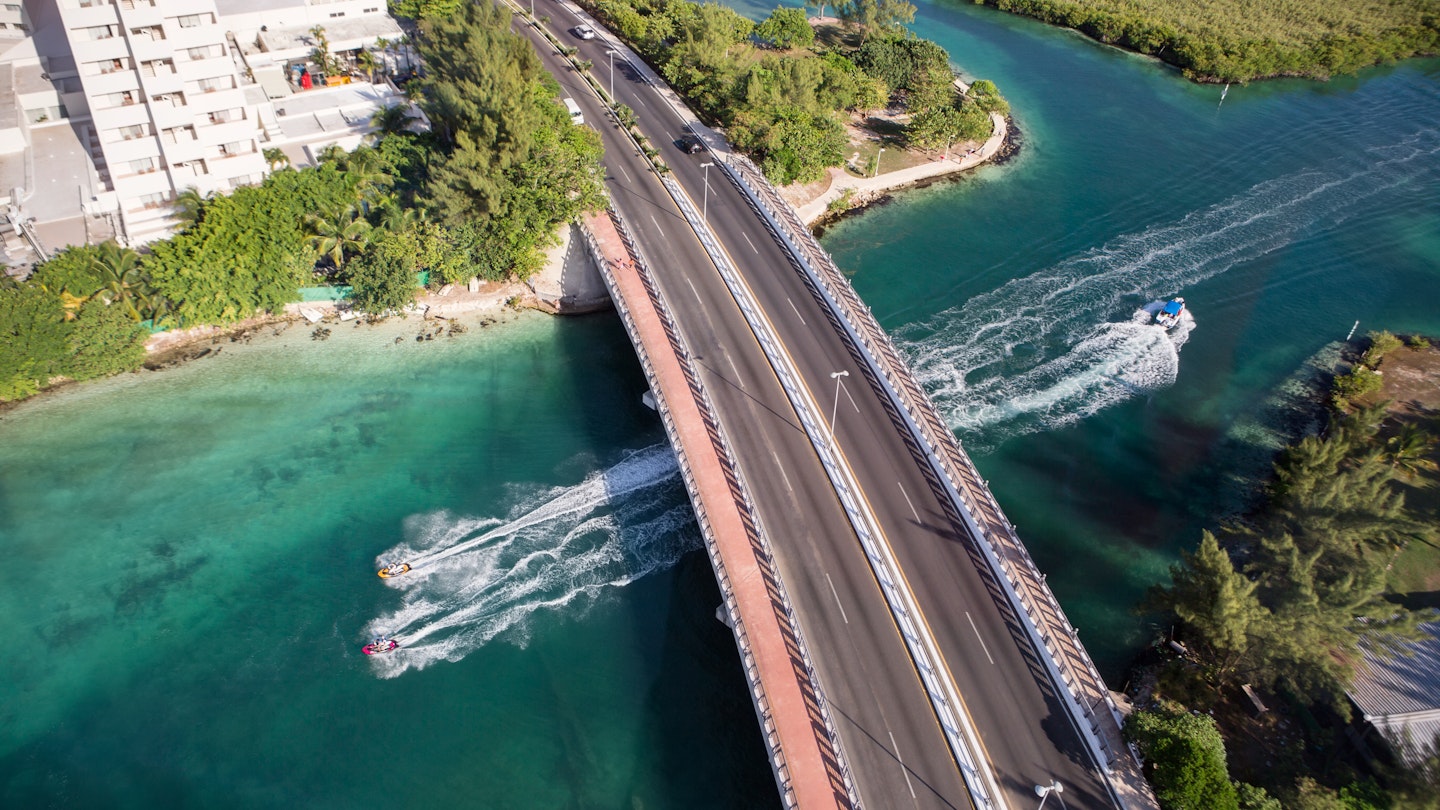The Riviera Maya is a compact stretch of Caribbean coast that is packed with activities. From snorkeling in vibrant reefs to swimming in refreshing cenotes, and lounging on stunning beaches, this area is perfect for independent exploration.
No car? No problem. We’ve compiled essential tips to help you navigate this diverse region filled with geological wonders and historic marvels.
Colectivos
The 14-person white minivans, known as colectivos, are the backbone of the transit system in the Riviera Maya. They operate along the main highway between Cancún and Tulum, transporting both tourists and locals effortlessly.
If you’re based in Playa del Carmen, proceed to Calle 2 and Av 20 to catch your ride; this intersection serves as the city’s primary colectivo depot. Someone will assist you in locating the appropriate van according to your destination. Fares range from M$20-45 (USD$1-2.40), depending on your travel distance. Collectivos run until late evening, so finding one during the day is generally easy.
In Tulum, colectivos typically gather near the ADO station downtown. However, these vehicles do not usually transport tourists to the Zona Hotelera and beach areas; thus, they are mainly meant for local residents. Use colectivos primarily for heading back towards Cancún. In Cancún, you can also catch the colectivos close to the ADO station.
Additionally, these vans offer stops at various locations along the main highway, including popular tourist destinations like Xcaret and Akumal. To catch a colectivo back, simply wave one down at the highway. They circulate frequently, ensuring minimal waiting time. However, be advised that the vans can become crowded during rush hours.
Taxis
Taxis are another convenient means of transportation in the Riviera Maya, although their fares tend to be higher than those of colectivos. For instance, a trip from Playa del Carmen to Tulum may cost between M$650-700 (USD$34-36), which is significantly more than the colectivo fare.
The region is segmented into various zones with fixed pricing, which is often posted at major tourist sites (such as the Tulum ruins). It is advisable to research current prices before your trip and use this information for fare negotiations. Taxis generally consist of small sedans, leading larger groups to split into multiple vehicles. However, many also offer tour services throughout the Riviera, providing an additional layer of flexibility for creating your own itinerary.
Although prices are typically predetermined by zones, travelers may find themselves quoted inflated prices at popular stops. Always confirm the fare before beginning your journey, and possessing sufficient Spanish skills to clarify any payment issues will be particularly beneficial.
Buses
For those planning longer trips, the Riviera boasts a well-established bus system, which is especially useful when traveling to and from Cancún’s airport.
The ADO bus stations are centrally located in all major cities along the route. Tickets may be purchased ahead of time online or at the counter on the day you wish to travel. Fares from Playa del Carmen to Cancún are approximately M$208 (USD$10) per person, while a journey from Tulum to Cancún costs around M$266 (USD$13). These buses offer convenient access to popular tourist sites, including Gran Cenote and the Tulum ruins.
If you are seeking to save even more, Mayab buses also operate from ADO terminals. While these buses have fewer amenities and resemble colectivos by picking up and dropping off passengers along the route, they can lead to longer travel times. Tickets for Mayab buses are priced around M$50 (USD$2.60); however, schedules are not posted online, and times can be unpredictable.
Rental Cars
Renting a car is a viable option for those desiring flexibility in their travel plans. Highway 307 is relatively straightforward to navigate, although traffic congestion may occur near the cities. Note that reserving vehicles in advance during peak season is advisable due to high demand. Be prepared to pay for parking at major attractions, and be aware that certain popular areas, like the Tulum hotel zone, may have limited parking availability.
While online prices for rental cars may seem affordable (sometimes as low as USD$5-10 per day), mandatory personal liability insurance, required for all vehicle rentals in Mexico, significantly increases the total cost.




